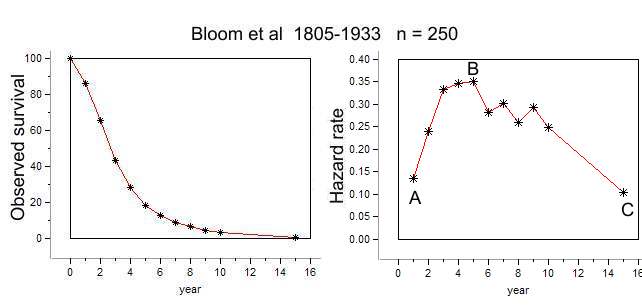 |
Initially the hazard rises and later on declines like in regional breast cancer
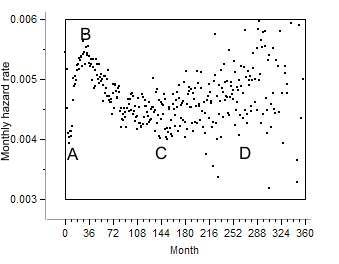 |
Cancer proceeds through two phases: 1. Compensated, when the tumor does
not cause any discomfort, and 2 de-compensated when tumor impinges upon vital
functions and the patient suffers. Patients diagnosed by mammography do not
feel any discomfort due to the tumor and the ascending segment AB is
attributed to therapy. The descending segment BC indicates that the
patient resists her disease better and better. The longer she lives the
better her chances. The ascending segment CD indicates that the patient’s
resistance declines.
The ascending segment AB is most pronounced in patients diagnosed relatively
early in their disease, e.g., breast, uterus or
melanoma of the skin . It is missing in cancers that are diagnosed relatively
late, .e.g. lung and pancreas. From the time
of their detection their hazard rate declines along the segment BC.
Some of the graphs below are clearly bi-modal, e.g., Forber
and Wade. Other display only the descending segment BC e.g.,
Bloom, Lazarus-Barlow, and Phillips.
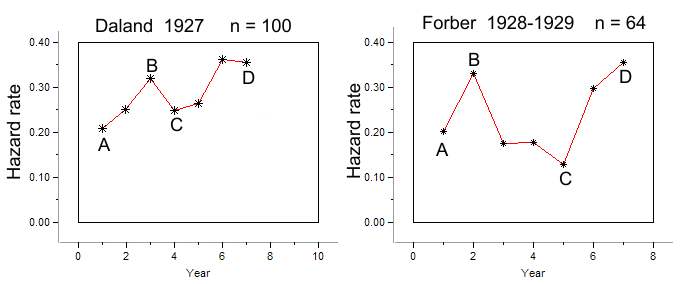 |
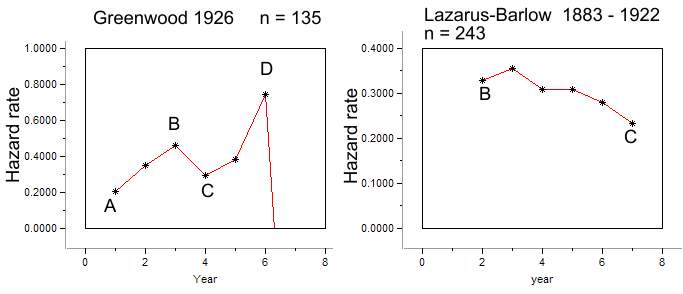 |
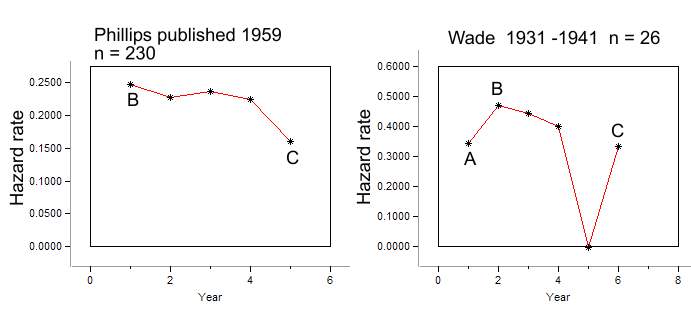 |
.The descending BC segment appears in
all cancers and does not appear in any other chronic disease. It is an
epidemiological manifestation of cancer.
“Untreated breast cancer”
is a misnomer
What the authors meant was that these women were not treated surgically.
However they all required continuing care and treatment. Since pain and suffering
brought them to the doctor their disease was de-compensated.
The ulcerating tumor was always infected and the threat of sepsis was the
major concern of the doctor. In the past the threat of sepsis was the main
indicator for mastectomy which they apparently refused. The name of the game
was asepsis and antisepsis and with time the emaciated and cachectic patient
required more and more care.
This misnomer indicates how narrow minded modern medicine is. It regards,
“burning, poisoning and cutting” as the only treatment there is, and ignores
other important treatments which are described in this site.
Most of the curves above displayed a descending BC segment
which indicates that for some time even these so called untreated women managed
to resist their disease and their hazard rate declined. This secret
is the main concern of this web-site.
References
1. Johnstone PAS, Norton, MS, Riffenburgh RH. Survival of patients with
untreated breast cancer. J. Surgical Oncol. 2000;73; 273-277
http://www3.interscience.wiley.com/cgi-bin/abstract/72000331/ABSTRACT